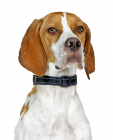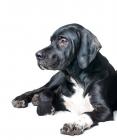English Pointer

In my own words
Oh what was that? Did you hear that noise? I think it was someone at the door, I’ll just go check and see who it was for you. I was wondering if we can go for walkies yet? I’m getting so restless inside the house, aren’t you? I just want to get outside in the fresh air and run around. That would be lots of fun don’t you think?
Did you know my kind is called a Pointer because we’re hunters. When we find game, we stand still and point to it. Isn’t that clever? You never need to worry about losing anything with me, I’ll find it and “point” it out to you! Isn’t that good? At least you’ll never lose your keys again. Now, how about that walk?
My ideal owner(s)
Families with older children
Active singles
Outdoorsy types
What they say about me
Gentle and playful
Protective
Loyal
Alert
Please read on, to find out more about me, and whether I will be someone you can be happy with for the next 14 years, or even longer!
Is this English Pointer for you?
Test your knowledge about the English Pointer
Information essential about the English Pointer
Kennel Club Group:
Gun Dog
Size:
Medium: Weight Male 55 – 75 lb (25 – 34 kg) Female 45 – 65 lb (20.4 – 29.5 kg)
Height Male 25 – 28” (63.5 – 71 cm) Female 23 – 26” (58.4 – 66 cm)
Popularity:
Breed History:
The English Pointer was first mentioned in England around 1650. It was developed by crossing the Italian Pointer, Foxhound, Bloodhound, Greyhound, Newfoundland, Setter and Bulldog and its name was derived from the way it stands motionless when it spots game as if it were pointing to it.
Before guns became popular for hunting, Pointers were used to find hare for Greyhounds to hunt and by the early 1700s English Pointers were very popular among hunters as they are excellent at catching a scenting and pointing the hunter in the right direction. They are quick and can cover a lot of ground in short amount of time, often being used to flush out birds. They are not water dogs nor are they expected to retrieve the kill. They work well in warm weather but are not suited well to the cold. The English Pointer often wins Pointing Field Trials over all other pointing breeds and was first recognised by the AKC in 1884. The breed continues to thrive as a popular hunting dog and companion.
Character:
The English Pointer is very high energy and an enthusiastic hunter but can be calm in the home with enough exercise. They are intelligent, devoted, loyal and clean. They are patient, friendly, affection and love children, making a true family friend. They are adaptable but can be reserved with strangers so require early socialisation. Ensure you are strong and firm in training to avoid timidity in the dog as a nervous human can make the dog nervous. They can become highly strung, distractible, neurotic and destructive if they are not given enough physical and mental exercise. They will bark at suspicious noises but are not watchdogs. The hunting instinct develops early and puppies will start to develop pointing behaviour as young as eight weeks old. They are generally good with other pets and are not usually dog aggressive. They exhibit a proud and aristocratic demeanour
Temperament:
This breed is affectionate, loyal and devoted. They are responsive, congenial and even tempered. They get along well with other dogs and household pets that they have been raised with. They are also good with children but need to be supervised with small children. They are reserved with strangers and will alert the family to suspicious noises and activity.
Conformation:
The English Pointer has a lean, muscular, athletic frame covered in a sleek, shiny coat. Their clean-cut heads have long muzzles and jaw-length ears. They have round, alert eyes that come in varying shades of brown depending on the coat color. The stop is well-defined. The nose is black or brown in color in the darker coated dogs and may be lighter or flesh in the lighter dogs. The teeth should meet in a level or scissors bite. The hanging ears are somewhat pointed at the end. The front legs are straight. Their long necks slope down to narrow shoulders, strong backs and thick tails. Overall, English Pointers have a sporty yet elegant look.
Coat:
The coat is sleek, shiny, short and dense with a natural sheen.
Colour:
The coat comes in liver, black, yellow or orange; either solid or with white patches.
Training:
This breed is easily distracted and wilful but are very intelligent. Early socialisation and training is very important but training sessions should be short and varied. They do not response to harsh or heavy handed training methods. Training should be done with firmness, fairness, patience and consistency
Care:
The English Pointer is easy to groom, requiring a regular brushing with a firm bristle brush and bathe only when necessary. Rubbing the coat with a piece of towelling or chamois will leave the coat gleaming. This breed is an average shedder. Ensure to check the feet for debris especially after the dog has been exercising or working and dry the dog thoroughly after hunting to prevent chilling. It is important to check the ears regularly for infection.
Health:
The lifespan of a healthy individual is between 13 and 14 years. If you buy from a reputable, responsible breeder, health problems should not occur. This breed is prone to suffering hip dysplasia, skin allergies, thyroid problems, epilepsy and dwarfism.
Exercise:
As a classic sporting dog this breed has lots of energy. They need room to run, daily walks and constructive “tasks” to keep them mentally stimulated. They make good jogging companions and have stamina so you will tire out long before they do. This breed is not recommended for apartment life as they are moderately active indoors and do best with lots of room to roam. They are very energetic and tireless so it important they get daily vigorous exercise to prevent restlessness indoors. They benefit from being taken on a daily, brisk, long walk, jog or running alongside a bicycle. Some love to swim and retrieve although they were not bred for this task. While out on the walk the dog must be made to heel beside or behind the person holding the lead, as instinct tells a dog the leader leads the way, and that leader needs to be the human. Teach them to enter and exit door and gateways after the humans. When the dog is taught to work as a hunting dog it must be taught the difference between when it is time to work and when it is not. When it is not time to hunt the dog should be respectfully heeling on a leash for the handler. This breed excels at Pointing Field Trials
You may also like:
If you like English Pointers, you may be interested in breeds of the same size »
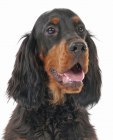

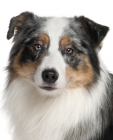
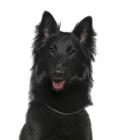

If you like English Pointers, you may like other breeds with similar characteristics »
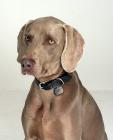
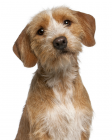
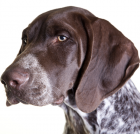
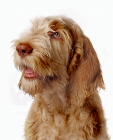
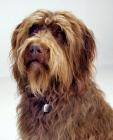
Advice on choosing your breed »
Find an animal shelter or rescue home where a English Pointer is waiting for a new home »
The following grid gives a fast track review which covers all breeds. You can apply it to help you decide if a English Pointer is suitable for you, the environment where you live, your personality and your lifestyle. On the grid, 1= strongly disagree, and 5= strongly agree. For example, if you are looking for a dog that likes to jog, look down the list under Activities, and you will see that English Pointers love running and hiking, scoring 5. If you want a playful companion, look down the same list, and you will see that Pointers love to fetch and hunt, and score 5. You might like to save or print off this section and keep it for reference while you check some other breeds before making your final choice. This breed is more than a match for even the most active family and they should not be taken on as a family pet unless they can guarantee plenty of vigorous exercise.
Be the first to rate this breed »
|
*PLEASE NOTE: All our breed profiles are general, and all dogs are individuals. Always talk to the breeders and meet the owners you are buying from. Try to meet the dog and its parents if it is a puppy in their home environment.








